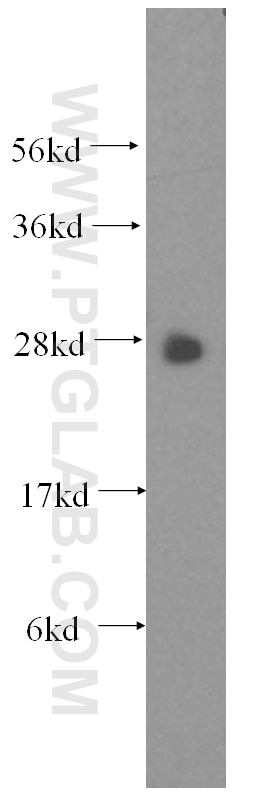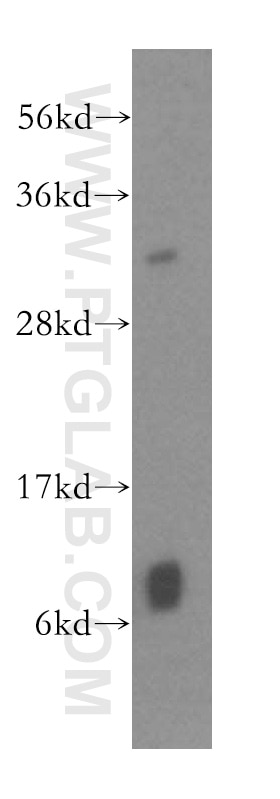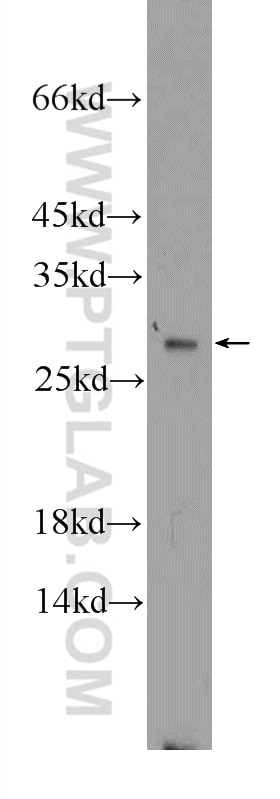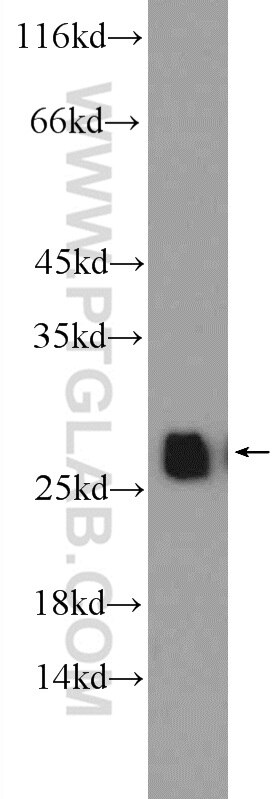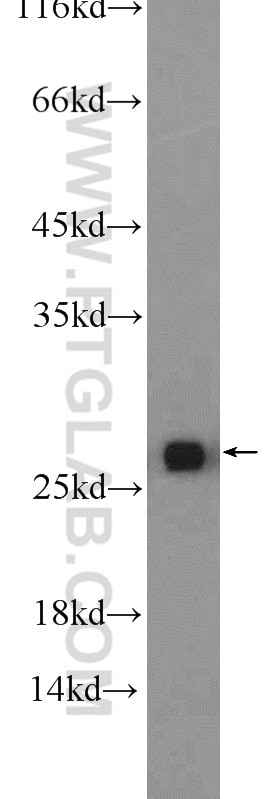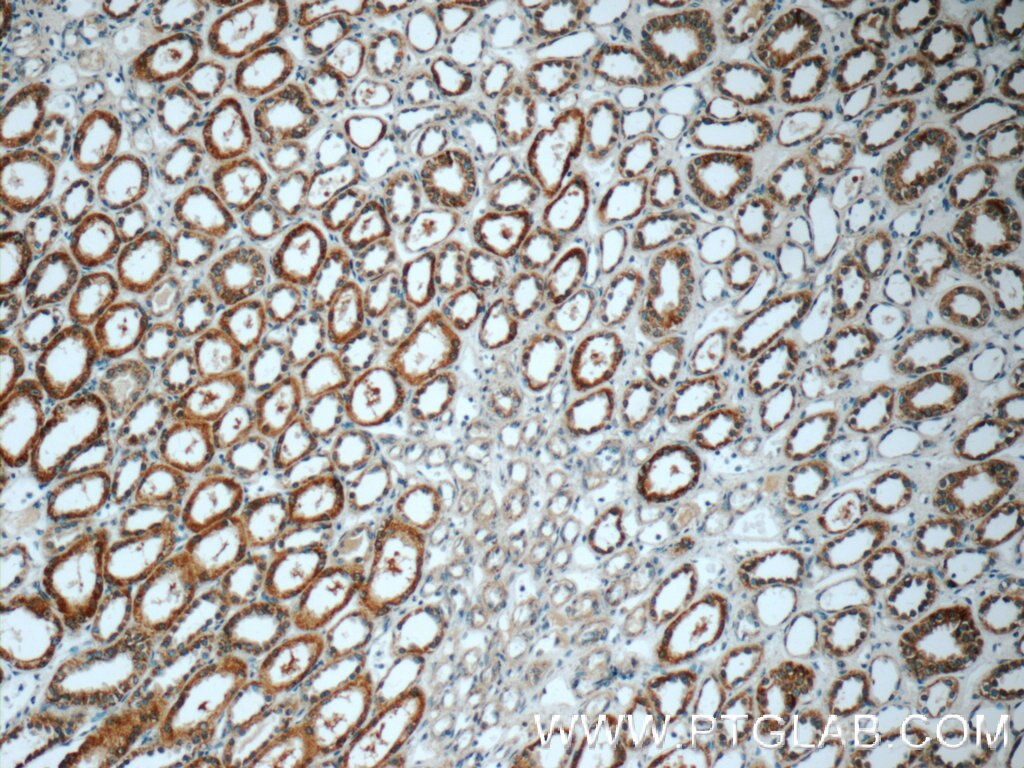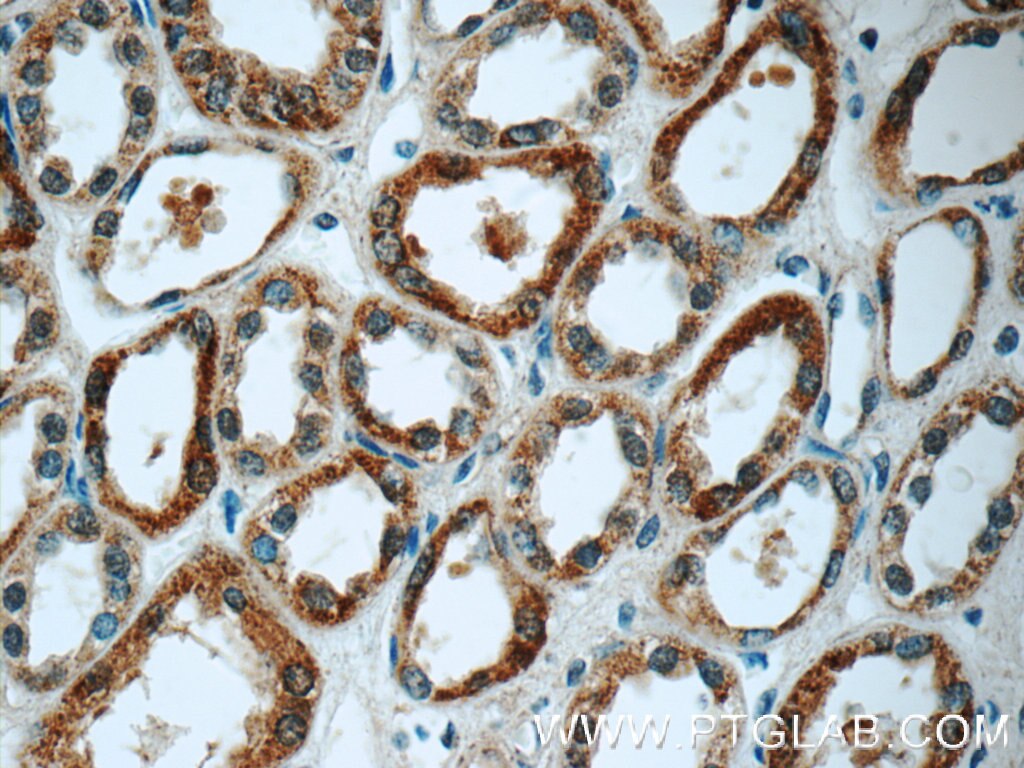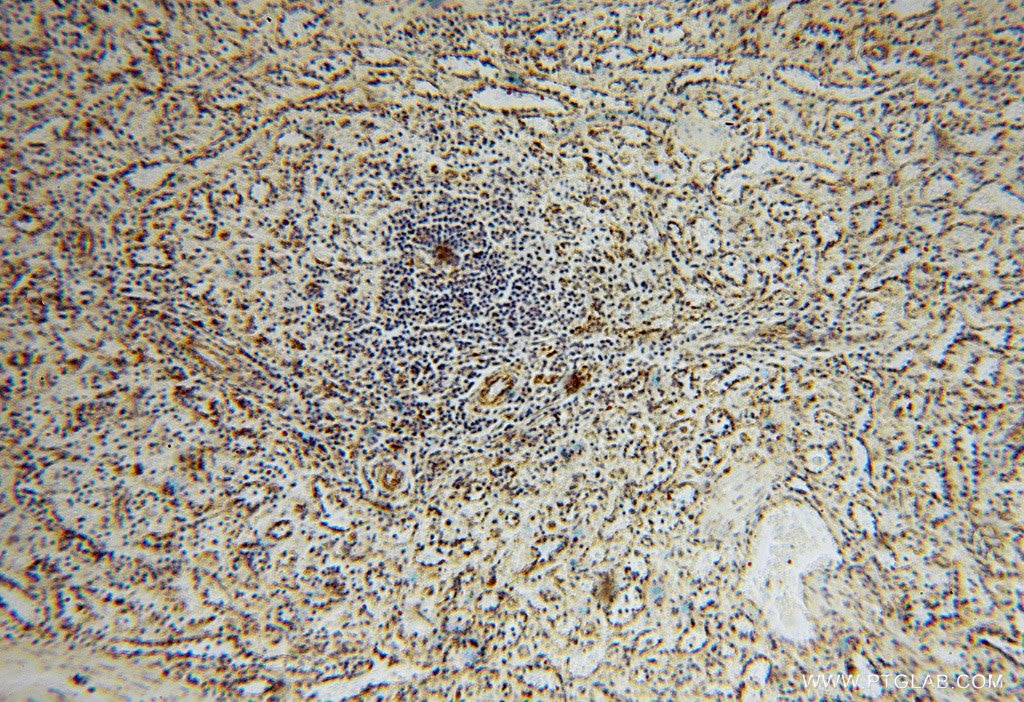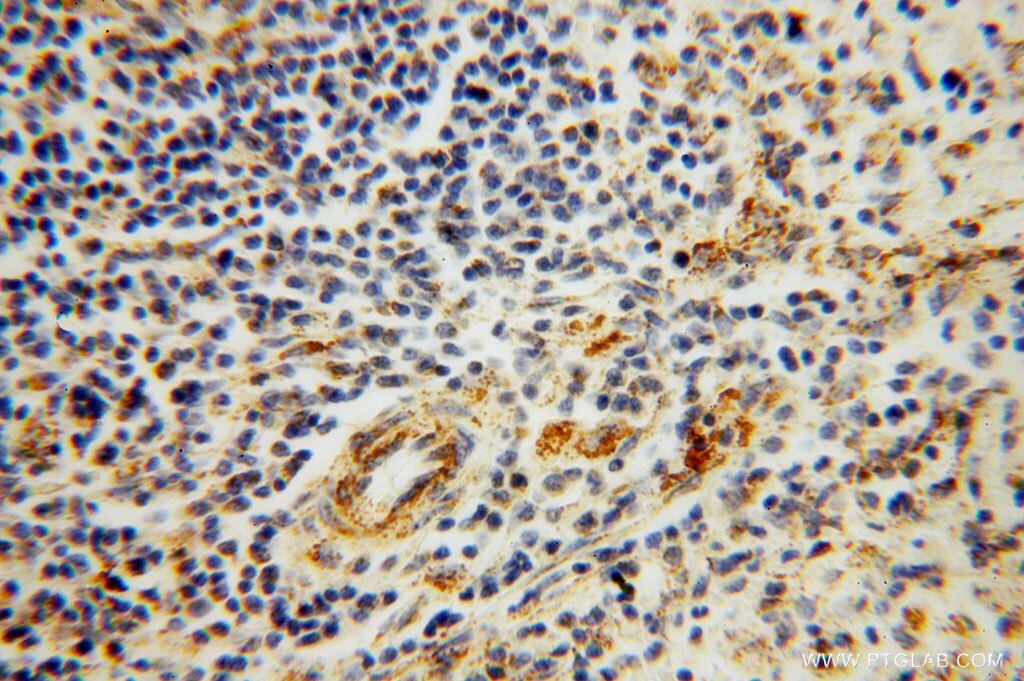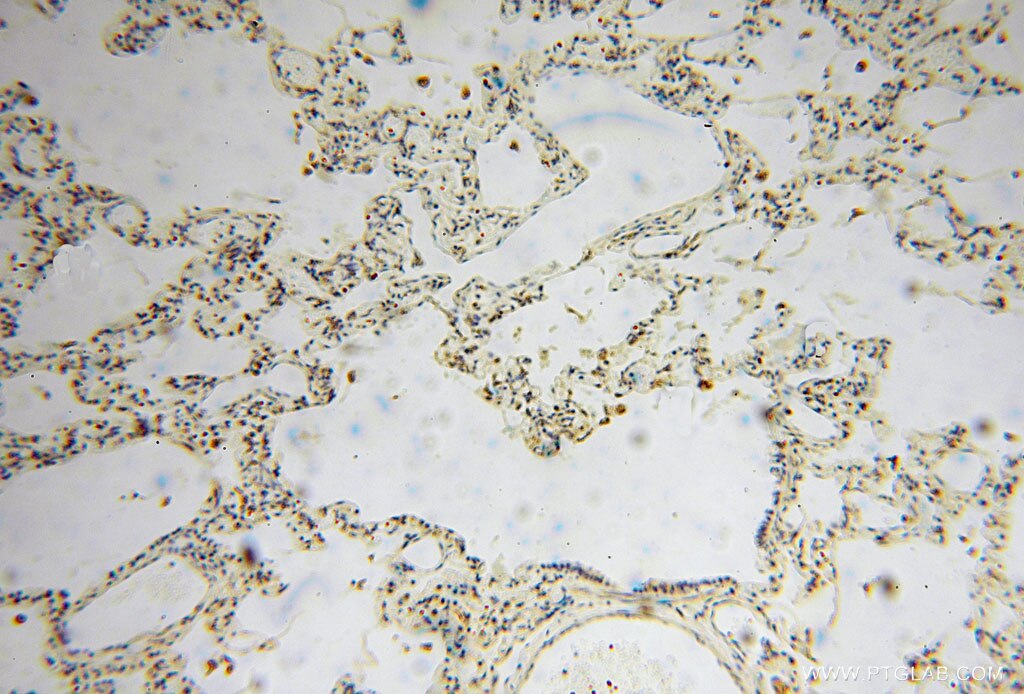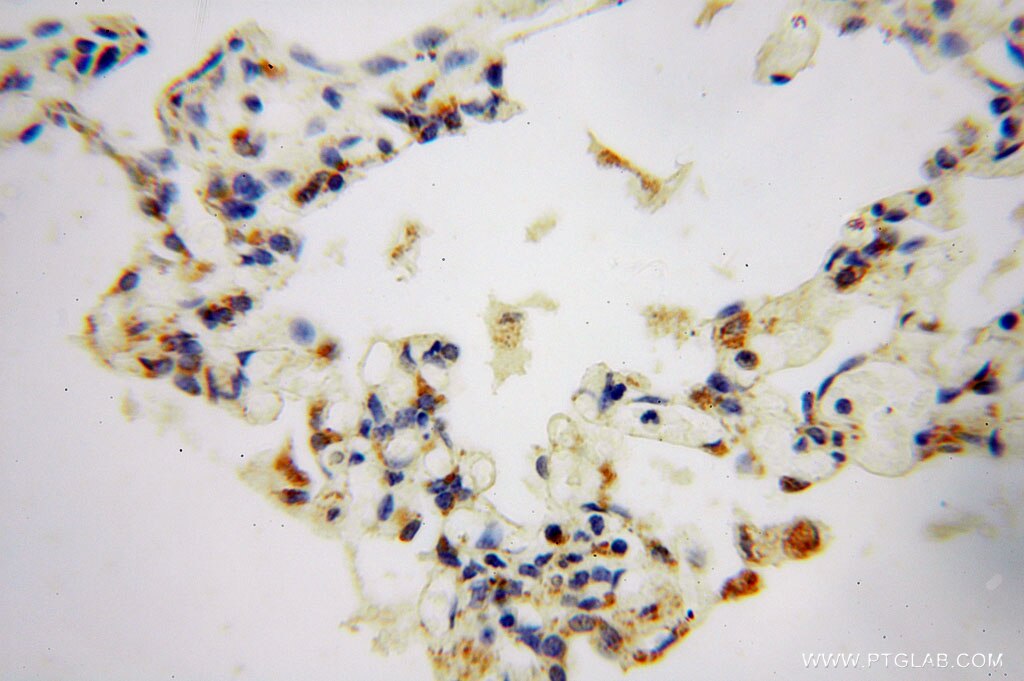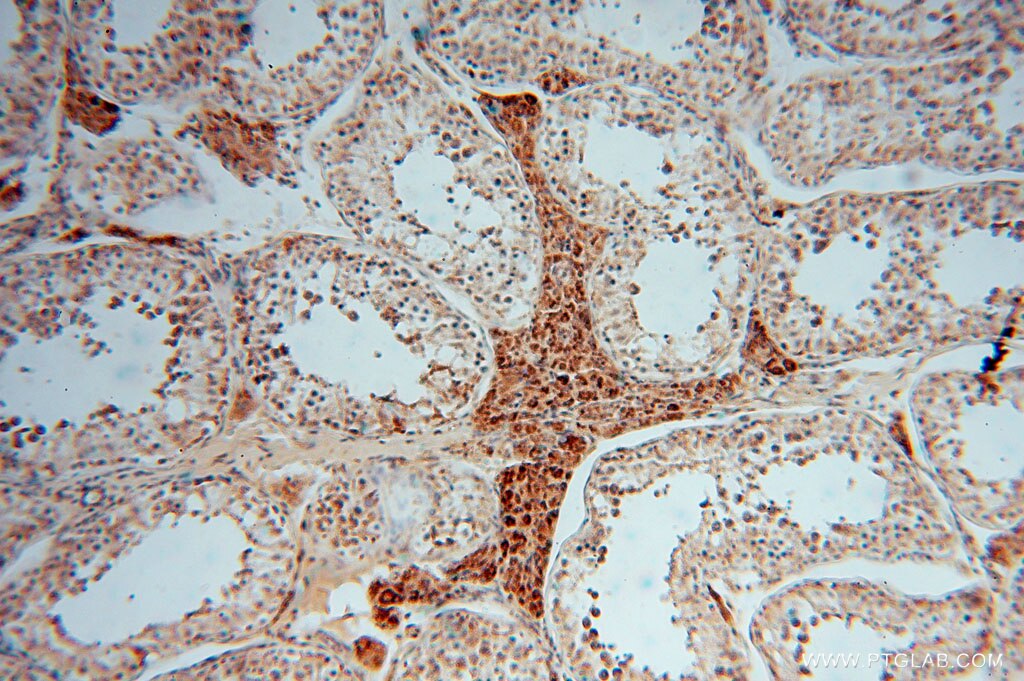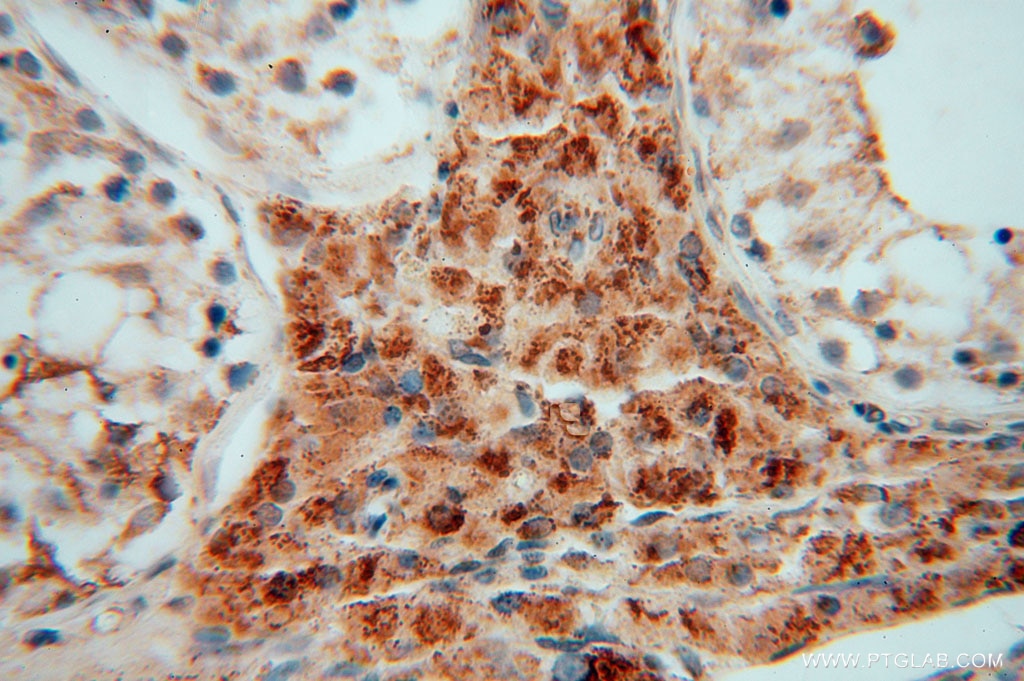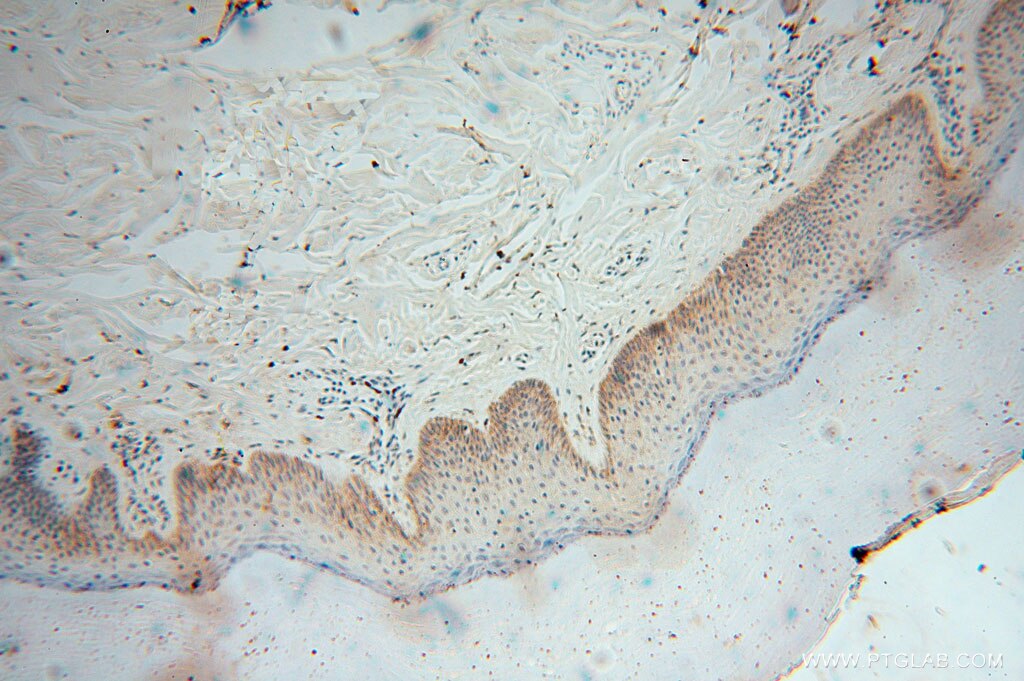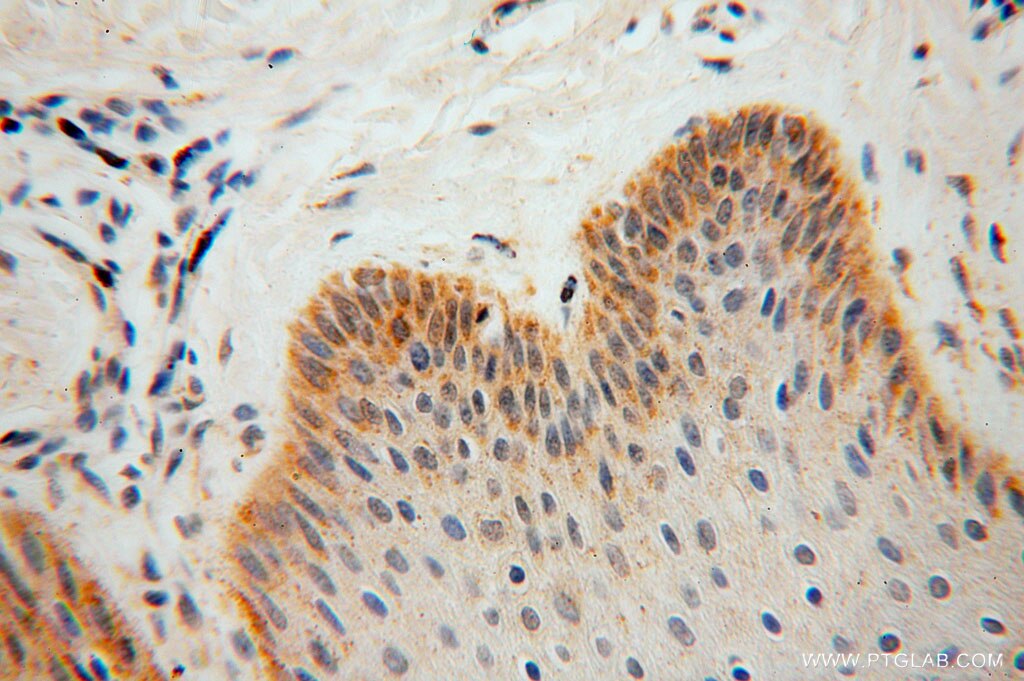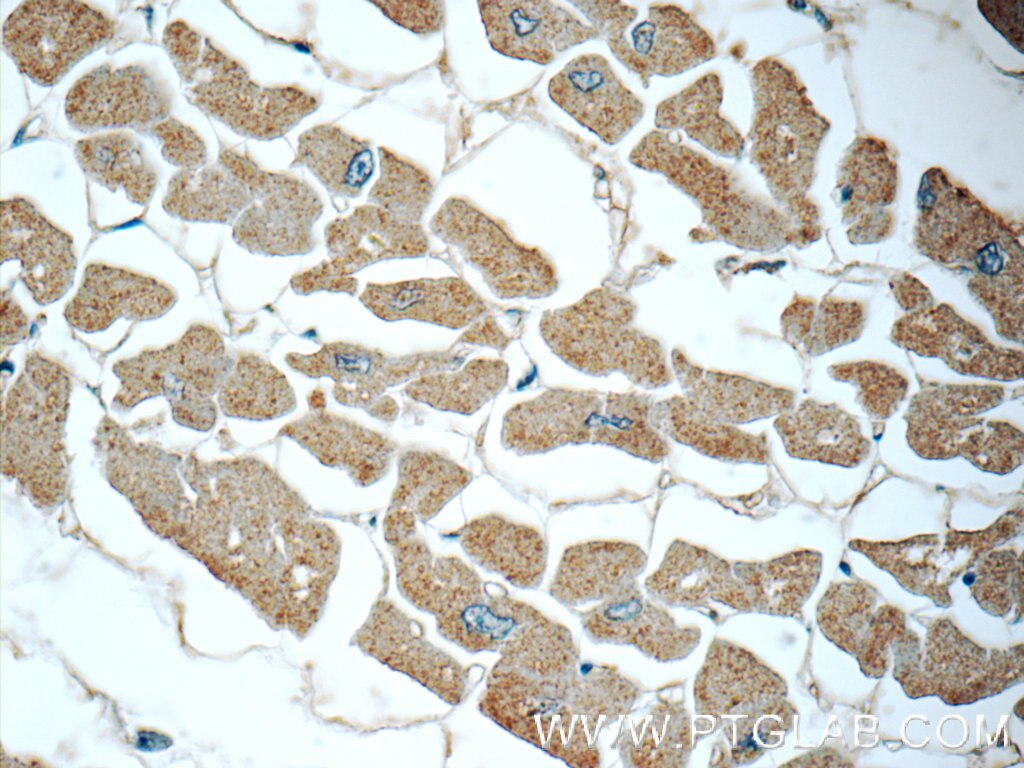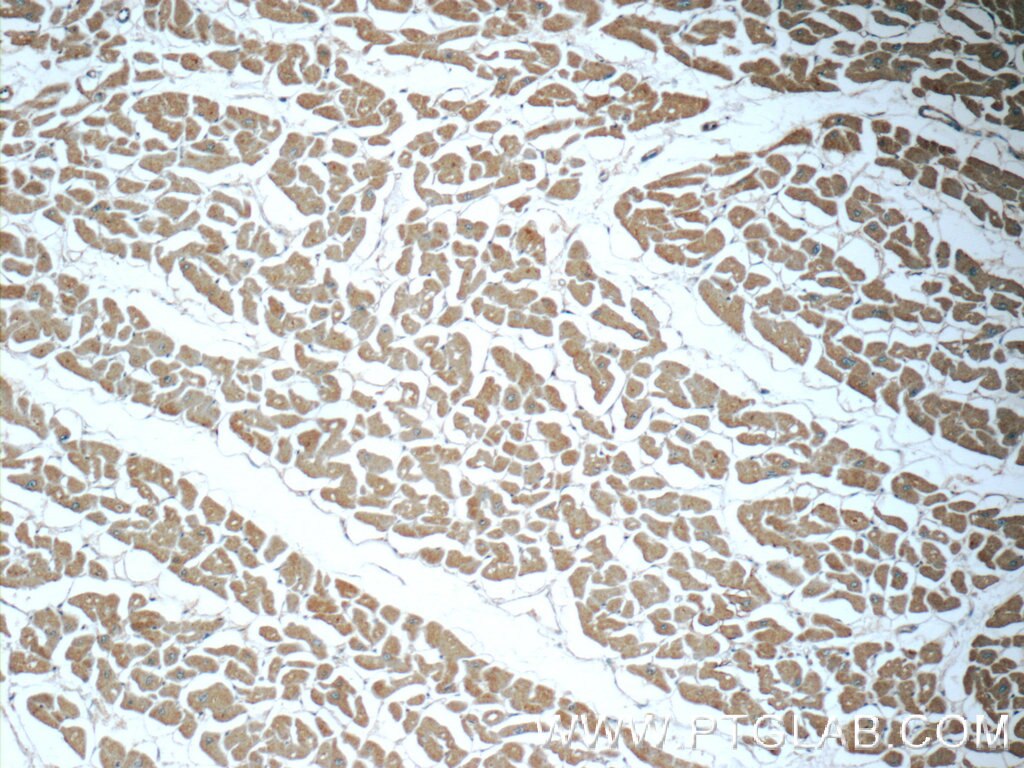Tested Applications
| Positive WB detected in | human brain tissue, rat liver tissue, mouse brain tissue, mouse liver tissue, HepG2 cells |
| Positive IHC detected in | human kidney tissue, human testis tissue, human skin tissue, human spleen tissue, human lung tissue, human heart tissue Note: suggested antigen retrieval with TE buffer pH 9.0; (*) Alternatively, antigen retrieval may be performed with citrate buffer pH 6.0 |
Recommended dilution
| Application | Dilution |
|---|---|
| Western Blot (WB) | WB : 1:500-1:2000 |
| Immunohistochemistry (IHC) | IHC : 1:50-1:500 |
| It is recommended that this reagent should be titrated in each testing system to obtain optimal results. | |
| Sample-dependent, Check data in validation data gallery. | |
Published Applications
| KD/KO | See 1 publications below |
| WB | See 7 publications below |
| IHC | See 5 publications below |
| IF | See 1 publications below |
Product Information
15838-1-AP targets GSTT1 in WB, IHC, IF, ELISA applications and shows reactivity with human, mouse, rat samples.
| Tested Reactivity | human, mouse, rat |
| Cited Reactivity | human, mouse, pig, hamster |
| Host / Isotype | Rabbit / IgG |
| Class | Polyclonal |
| Type | Antibody |
| Immunogen |
CatNo: Ag8588 Product name: Recombinant human GSTT1 protein Source: e coli.-derived, PGEX-4T Tag: GST Domain: 1-240 aa of BC007065 Sequence: MGLELYLDLLSQPCRAVYIFAKKNDIPFELRIVDLIKGQHLSDACAQVNPLKKVPALKDGDFTLTESVAILLYLTRKYKVPDYWYPQDLQARARVDEYLAWQHTTLRRSCLRALWHKVMFPVFLGEPVSPQTLAATLAELDVTLQLLEDKFLQNKAFLTGPHISLADLVAITELMHPVGAGCQVFEGRPKLATWRQRVEAAVGEDLFQEAHEVILKAKDFPPADPTIKQKLMPWVLAMIR Predict reactive species |
| Full Name | glutathione S-transferase theta 1 |
| Calculated Molecular Weight | 240 aa, 27 kDa |
| Observed Molecular Weight | 28 kDa, 30 kDa |
| GenBank Accession Number | BC007065 |
| Gene Symbol | GSTT1 |
| Gene ID (NCBI) | 2952 |
| RRID | AB_2116344 |
| Conjugate | Unconjugated |
| Form | Liquid |
| Purification Method | Antigen affinity purification |
| UNIPROT ID | P30711 |
| Storage Buffer | PBS with 0.02% sodium azide and 50% glycerol, pH 7.3. |
| Storage Conditions | Store at -20°C. Stable for one year after shipment. Aliquoting is unnecessary for -20oC storage. 20ul sizes contain 0.1% BSA. |
Background Information
GSTT1 belongs to the GST superfamily and Theta family. It is a conjugation of reduced glutathione to a wide number of exogenous and endogenous hydrophobic electrophiles. GSTT1 acts on 1,2-epoxy-3-(4-nitrophenoxy)propane, phenethylisothiocyanate 4-nitrobenzyl chloride and 4-nitrophenethyl bromide. It displays glutathione peroxidase activity with cumene hydroperoxide. GSTM1 and GSTT1 has been suggested as a risk factor in various cancers. GSTT1 is important in the detoxification of unidentified xenobiotics in the large intestine.
Protocols
| Product Specific Protocols | |
|---|---|
| IHC protocol for GSTT1 antibody 15838-1-AP | Download protocol |
| WB protocol for GSTT1 antibody 15838-1-AP | Download protocol |
| Standard Protocols | |
|---|---|
| Click here to view our Standard Protocols |
Publications
| Species | Application | Title |
|---|---|---|
Cell Syst Rare Disease Mechanisms Identified by Genealogical Proteomics of Copper Homeostasis Mutant Pedigrees. | ||
FASEB J Gstm1/Gstt1 is essential for reducing cisplatin ototoxicity in CBA/CaJ mice.
| ||
Toxicol Sci Determination of Hepatotoxicity and Its Underlying Metabolic Basis of 1,2-dichloropropane in Male Syrian Hamsters and B6C3F1 Mice. | ||
Drug Metab Dispos Evaluation of hepatic glutathione transferase Mu 1 and Theta 1 activities in humans and mice using genotype information. | ||
Curr Issues Mol Biol COPS5 Conferred the Platinum Resistance in Epithelial Ovarian Cancer | ||
Int J Clin Exp Pathol Different carcinogenic process in cholangiocarcinoma cases epidemically developing among workers of a printing company in Japan. |

